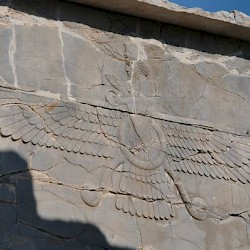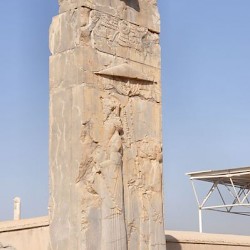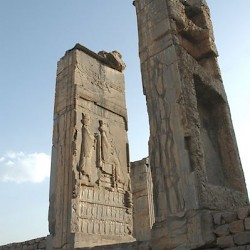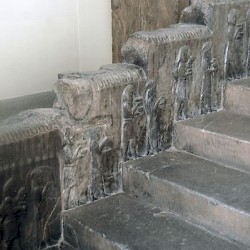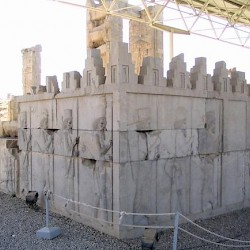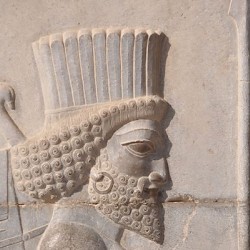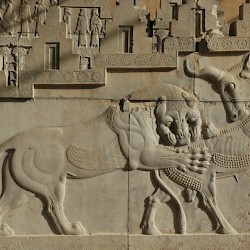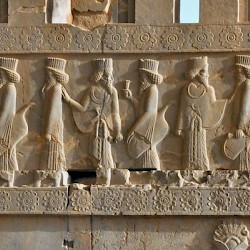Persepolis, Tripylon
Persepolis (Old Persian Pârsa, modern Takht-e Jamshid): Greek name of one of the capitals of the ancient Achaemenid Empire, founded by king Darius the Great (r.522-486 BCE). There were several satellite sites, Naqš-e Rustam and Takht-e Rustam.
Tripylon or Council Hall
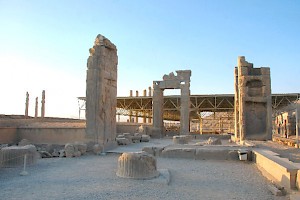
The Tripylon ("triple gate") of Persepolis can be found between the Apadana and the Hall of Hundred Columns and connects these two buildings. This suggests that it was built after the completion of these two buildings, but some scholars argue for an earlier date.
However this may be, the building consists of a central room with approaches to the north (to the Apadana), east (Hall of Hundred Columns) and south (Palace of Xerxes and "palace D").
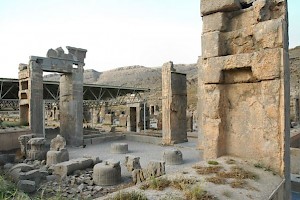
The three gates were decorated. In the eastern gate, we can see the king sitting on his throne, attended by the crown prince. The southern and northern gates show the king with an attendant, leaving the building. Both representations are well-known; parallels can be seen in a/o the Palace of Xerxes and the Hall of Hundred Columns.
Several scholars argue that the Tripylon was in fact a meeting place, where the king could receive his advisers. They call it the Council Hall. Others stress that it is just a monumental corridor between three buildings. The fact that there is sufficient room between the gates to host several people, is not really decisive; the interior of the Gate of All Nations is also pretty spacious, and this does not mean that it served as a meeting place.
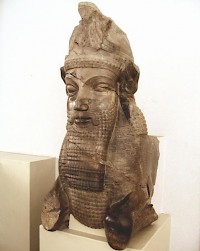
The capitals of the four columns in the hall represented a man's head with a bull's body. These mythological beings are called lamassus and originated in Babylonia and Assyria. The Persians adopted them and we can see them in Persepolis in the Gate of All Nations. The general idea behind these fantasy creatures is that they warded off evil; therefore, they are usually placed in gates. This might suggest that the Tripylon was a gate too (and not a Council Hall), but these lamassus served as capitals, which is unusual.
To the north of the building is a flight of stairs, decorated with guardsmen. If you descend the stairs, you're close to the Eastern stairs of the Apadana.
